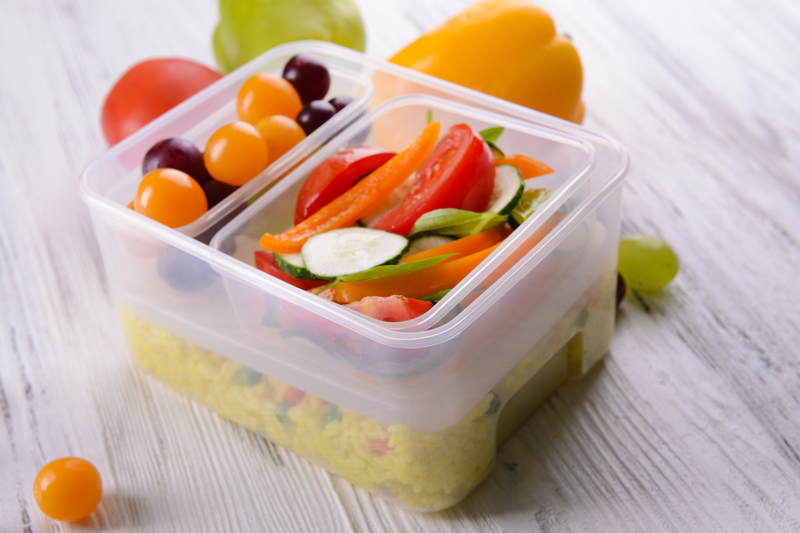Proven Techniques for Cutting Down Home Waste
Reducing household waste is an essential step toward a more sustainable, environmentally friendly lifestyle. Today, homes generate significant amounts of garbage, often destined for landfill. However, with a few practical changes, it's possible for any household to reduce its waste footprint significantly. Let's explore proven techniques for cutting down home waste, empowering you to live cleaner and greener.

Why Cutting Down Household Waste Matters
Home waste reduction is more than just a trend--it's a necessity. The average person discards approximately 4.5 pounds of waste daily, much of which could be reused or recycled. Landfills contribute to greenhouse gas emissions, pollute groundwater, and destroy habitats. By adopting eco-friendly habits, you do more than tidy up your home: you contribute to the well-being of our planet and future generations.
Main Benefits of Reducing Home Waste
- Environmental preservation: Less waste means fewer pollutants and reduced landfill usage.
- Cost savings: Buying only what you need shrinks your grocery and utility bills.
- Minimalistic living: Life becomes simpler and less cluttered by focusing on necessities.
- Resource conservation: Reusing and recycling preserves finite natural resources.
- Community involvement: Engaging in local recycling or composting programs strengthens neighborhood ties.
1. Analyze Your Current Waste Habits
The first step toward reducing household waste is understanding your waste stream. Perform a waste audit--collect your garbage for a week and sort it into categories: food waste, plastic, paper, glass, and miscellaneous items. This will reveal patterns and expose which areas of your home produce the most waste.
Tips for Conducting a Home Waste Audit
- Label bins: Use bins or bags for each waste category.
- Monitor frequently discarded items: Notice recurring items that could be replaced or eliminated.
- Calculate quantities: Weigh or count items to pinpoint problem areas.
Once your audit is complete, you'll know precisely where to implement waste reduction strategies.
2. Smart Shopping and Purchasing Choices
One of the main sources of home waste is unnecessary purchasing or poor planning. Changing the way you shop can dramatically reduce household garbage and plastic waste.
Buy in Bulk and Avoid Single-Use Items
- Bulk purchases mean less packaging per item, which cuts plastic and paper waste significantly.
- Avoid single-use products: Choose reusable alternatives to single-use water bottles, bags, coffee cups, and more.
Adopt Reusable Options
- Switch to cloth grocery bags and reusable produce sacks instead of relying on disposable plastic.
- Invest in stainless steel or glass containers for food storage to avoid plastic wrap and disposable sandwich bags.
- Carry a refillable water bottle and coffee cup wherever you go.
Smart, mindful shopping not only limits home waste but also saves money in the long run.
3. Composting Organic Waste
Food scraps and yard waste together make up more than a quarter of what we throw away. Home composting transforms organic waste into valuable fertilizer for gardens and plants, diverting a significant amount of household waste from landfills.
How to Start Composting at Home
- Choose a spot with good drainage for your compost bin or pile.
- Add green materials: vegetable peels, fruit scraps, coffee grounds, and grass clippings.
- Add brown materials: dried leaves, cardboard, paper, and wood chips.
- Always maintain a balance between green and brown materials for optimal decomposition.
- Toss or stir the pile occasionally to aerate and speed up the breakdown process.
Composting at home drastically reduces the volume of waste, meaning fewer trips to the bin and a rich soil amendment for planting.
4. Recycling Right
Recycling is one of the easiest and most effective ways to cut down household waste. However, improper recycling can contaminate batches and render entire loads unusable. Understanding what is recyclable in your area and cleaning recyclable items before disposal is crucial.
Best Practices for Home Recycling
- Know your local guidelines: Rules vary, so check what your local facility accepts.
- Rinse containers: Remove food residue to avoid contamination.
- Don't bag recyclables: Empty them loosely into the recycling bin.
- Flatten cardboard and cartons to save space in your recycling bin.
Proper recycling reduces landfill volume, conserves raw materials, and lowers pollution.
5. Upcycling and Reusing
Upcycling is the creative reuse of items that would otherwise enter the waste stream. Before tossing anything, consider whether it can be repurposed.
Simple Upcycling Ideas for Everyday Items
- Glass jars: Turn them into storage containers, vases, or candle holders.
- Old t-shirts: Make cleaning rags, tote bags, or even quilts.
- Cardboard boxes: Use as organizers or for children's crafts and activities.
- Plastic containers: Use for organizing small items in the garage or closet.
Upcycling saves money and reduces the need to buy new products, which translates into less packaging and lower overall household waste.
6. Meal Planning and Food Preservation
Food waste is a significant contributor to home garbage. One of the most effective techniques for minimizing food waste is strategic meal planning and proper food storage.
Effective Meal Planning Strategies
- Plan weekly meals and make a precise shopping list.
- Shop your pantry first to use what you already have.
- Portion control: Prepare the right amount for your family's needs.
Food Preservation Techniques
- Freeze leftovers or fresh produce before it spoils.
- Pickle or can surplus fruits and vegetables.
- Store food in airtight containers to extend freshness and usefulness.
By adopting meal planning and food preservation, you'll dramatically reduce the amount of produce and leftovers ending up in the trash.
7. Switch to Eco-Friendly Products
Swapping disposable or less sustainable products for greener alternatives immediately lowers your household's waste output.
Best Eco-Friendly Swaps for the Home
- Bamboo toothbrushes replace plastic ones and biodegrade after use.
- Beeswax wraps serve as reusable plastic wrap alternatives for food storage.
- Refillable cleaning supplies cut down on plastic bottles and packaging.
- Unpackaged or bar soap eliminates unnecessary plastic containers.
These simple swaps support a zero-waste lifestyle and prove that eco-conscious living is achievable in every home.
8. Donate and Sell Unwanted Items
Before throwing away items in good condition, look for opportunities to donate or sell them. This extends their lifespan and keeps them out of landfills.
Best Ways to Rehome Household Items
- Charity shops: Clothes, books, furniture, and electronics can find new homes.
- Online marketplaces (e.g., Craigslist, Facebook Marketplace): Sell anything from gadgets to decor.
- Community groups: Local 'Buy Nothing' or freecycle networks offer easy avenues for giving things away.
If possible, avoid throwing away items that could be useful to someone else. Not only does this reduce your home waste, but it can also foster goodwill and connections within your community.
9. Repair Whenever Possible
Embracing a repair mentality is central to sustainable household waste management. Modern consumer culture often promotes replacing rather than fixing, but many items can be easily repaired at home.
Common Household Items Worth Repairing
- Small electronics and appliances
- Clothing (patching, sewing, replacing buttons or zippers)
- Furniture (tightening bolts, replacing hardware)
- Bicycles and scooters
Utilize online tutorials or local repair cafes to learn new skills and give household items a second life. Repairing saves money and keeps useful items out of the waste stream.
10. Create a Low-Waste Bathroom Routine
Bathrooms accumulate a surprising amount of household trash: plastic toiletry bottles, old toothbrushes, disposable razors, and more. Adopting a low-waste bathroom routine can substantially reduce your home's garbage output.
Bathroom Waste Reduction Tips
- Use bar shampoo and soap instead of products in plastic bottles.
- Switch to a safety razor with replaceable blades.
- Choose compostable dental floss and bamboo toothbrushes.
- Opt for cloth makeup wipes and reusable cotton rounds.
Caring for yourself shouldn't mean harming the environment. Small switches in daily hygiene routines significantly cut down waste over time.
11. Get the Family Involved
Waste reduction is most successful as a team effort. Engage your family by assigning roles, setting goals, and celebrating achievements related to home waste reduction.
Ways to Encourage Family Participation
- Make waste sorting a game for children.
- Set monthly challenges--who can generate the least waste?
- Encourage family members to share ideas for reusing and repurposing items.
- Spend time together making crafts from recyclables or cooking "scraps recipes."
Involving everyone not only makes reducing waste easier but also cultivates environmentally conscious habits for life.

12. Stay Motivated with Community and Tracking
Joining a community of like-minded individuals can offer new inspiration and accountability as you embrace proven techniques for cutting down home waste. Track progress to see tangible results and keep the momentum going.
Motivation and Tracking Tips
- Participate in local zero-waste or environment-focused groups.
- Set measurable goals--like reducing garbage bin size or keeping compost bin full.
- Share your journey on social media to inspire friends and neighbors.
- Reflect each month on strategies that worked and those that need improvement.
Conclusion: Proven Techniques for a Low-Waste Home
By combining these proven techniques for cutting down household waste--from smart shopping and composting to upcycling, recycling, and more--you will see a dramatic reduction in your home's garbage output. Not only will you enjoy a tidier, healthier home, but your efforts will also benefit your community and our planet for generations to come.
Start with small changes: pick a single strategy from this guide, implement it, and build from there. Celebrate every victory, however minor. Cutting home waste is not only about preservation but also about fostering a new mindset--one of resourcefulness, creativity, and respect for our environment. The transformation begins at home--why not start today?